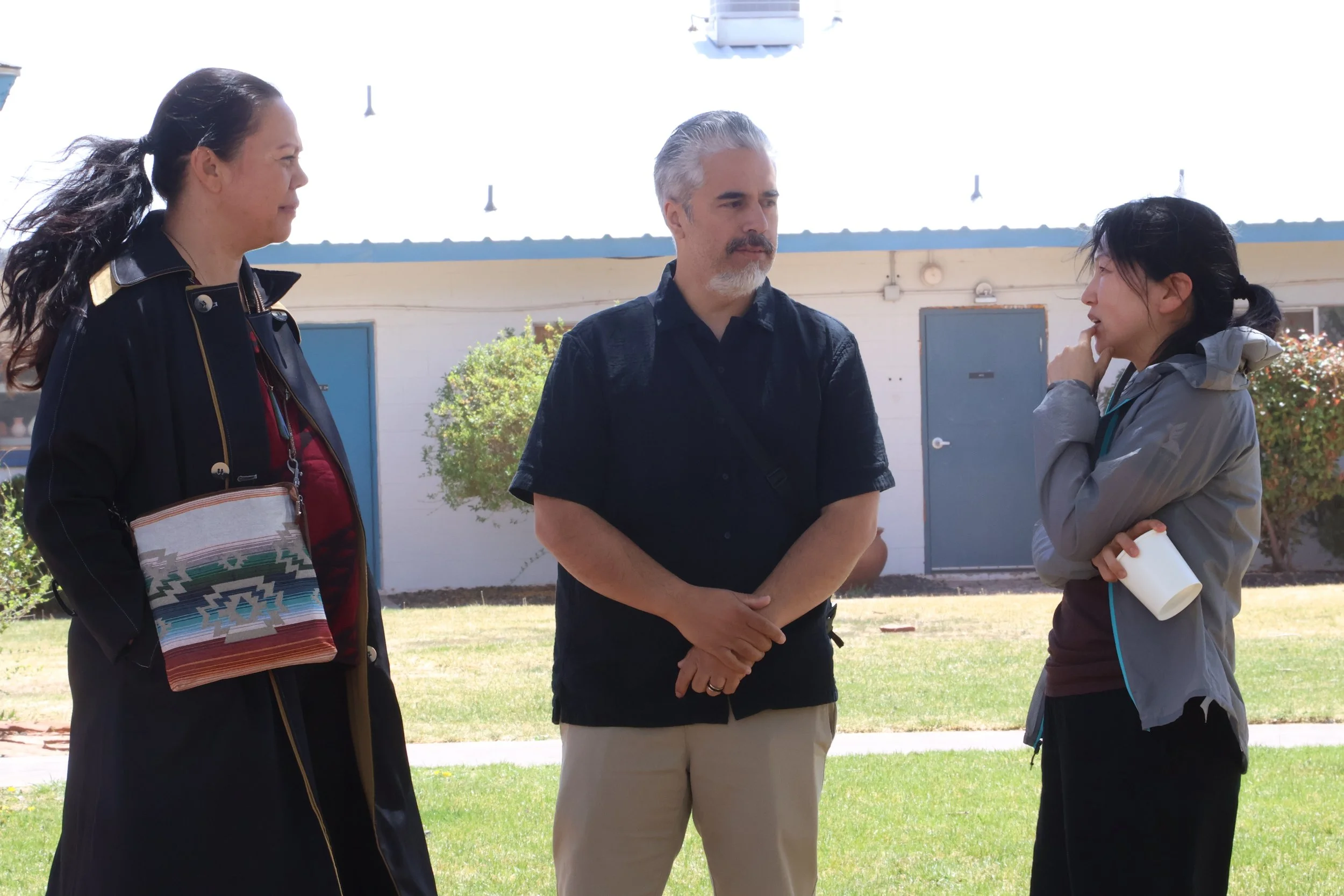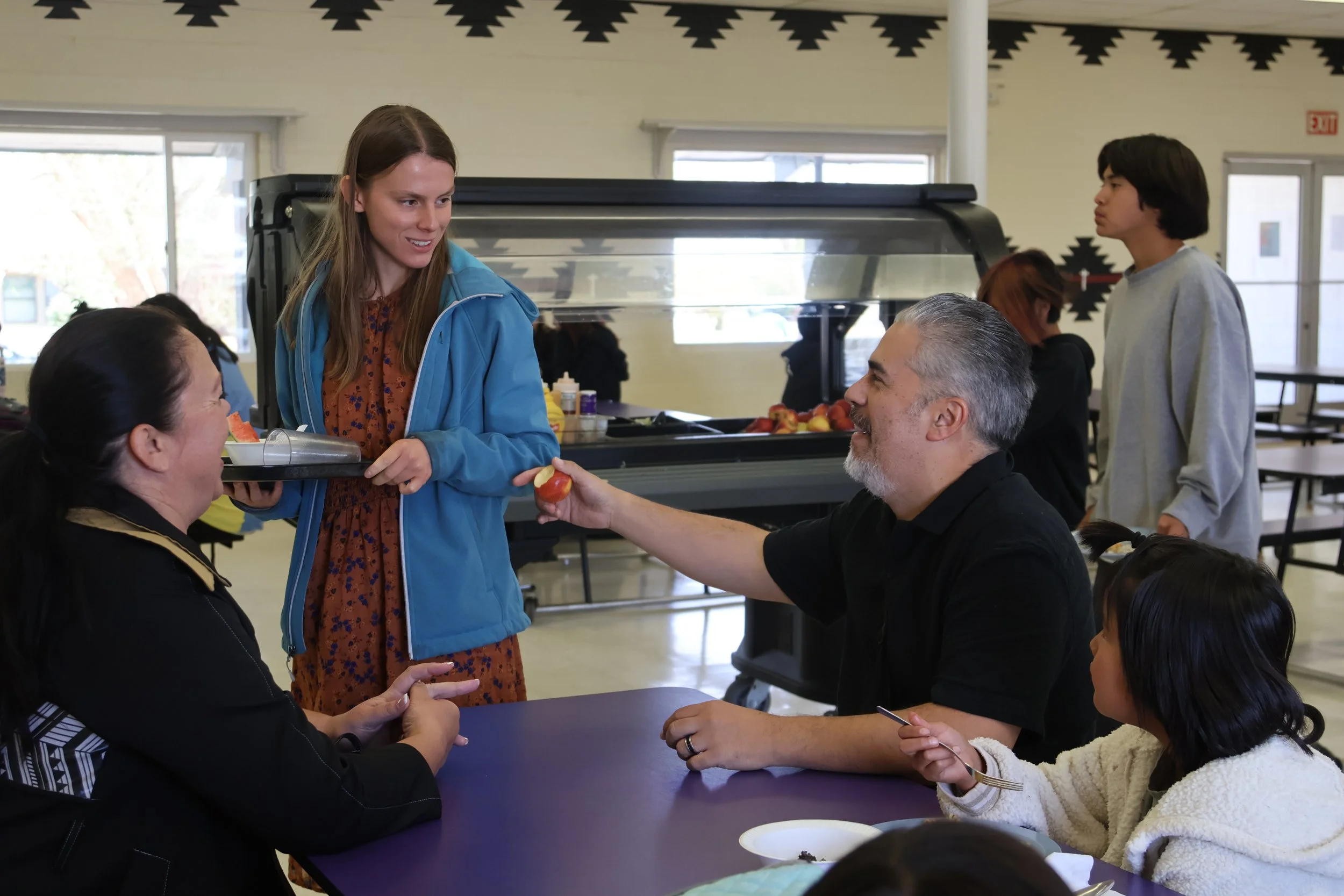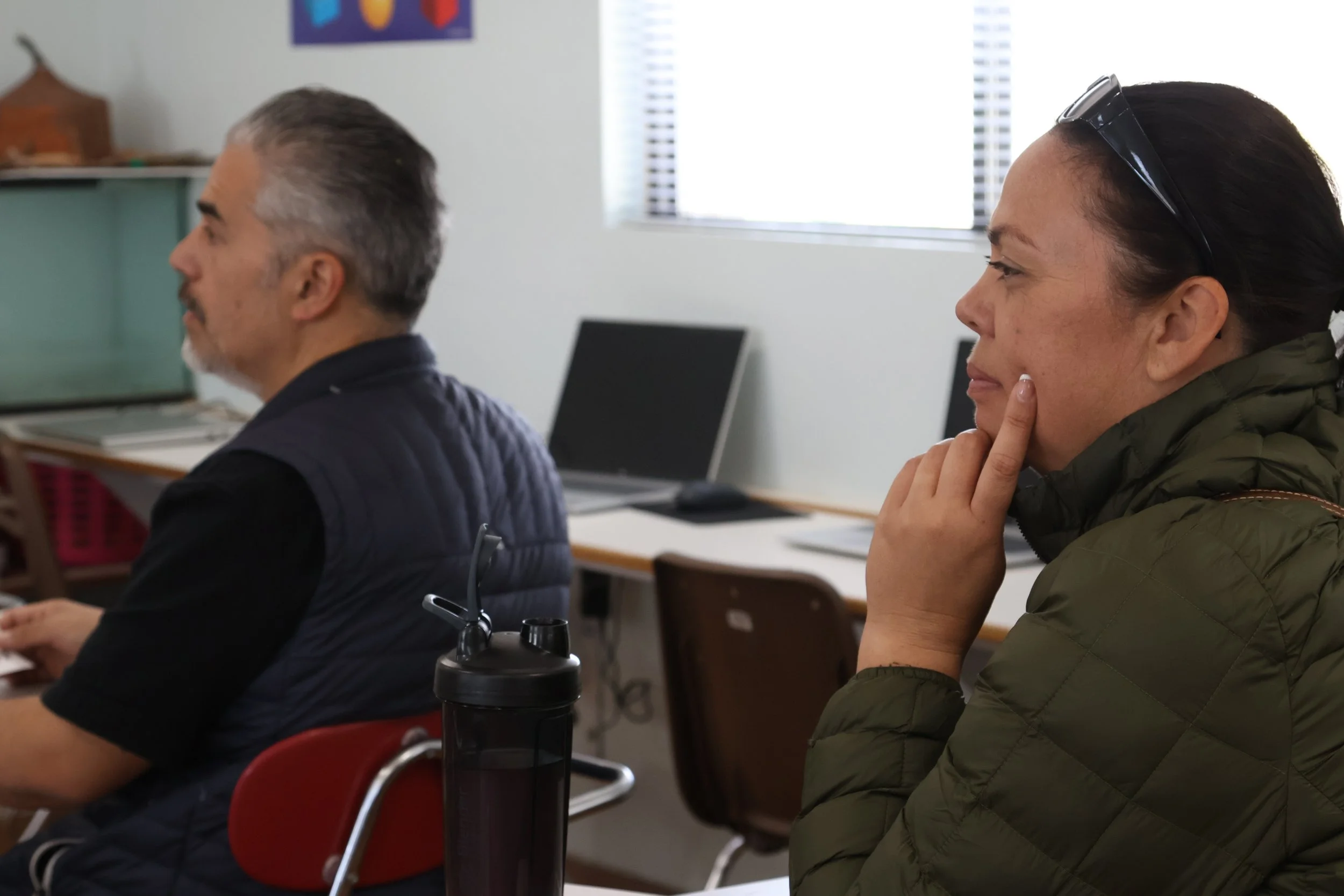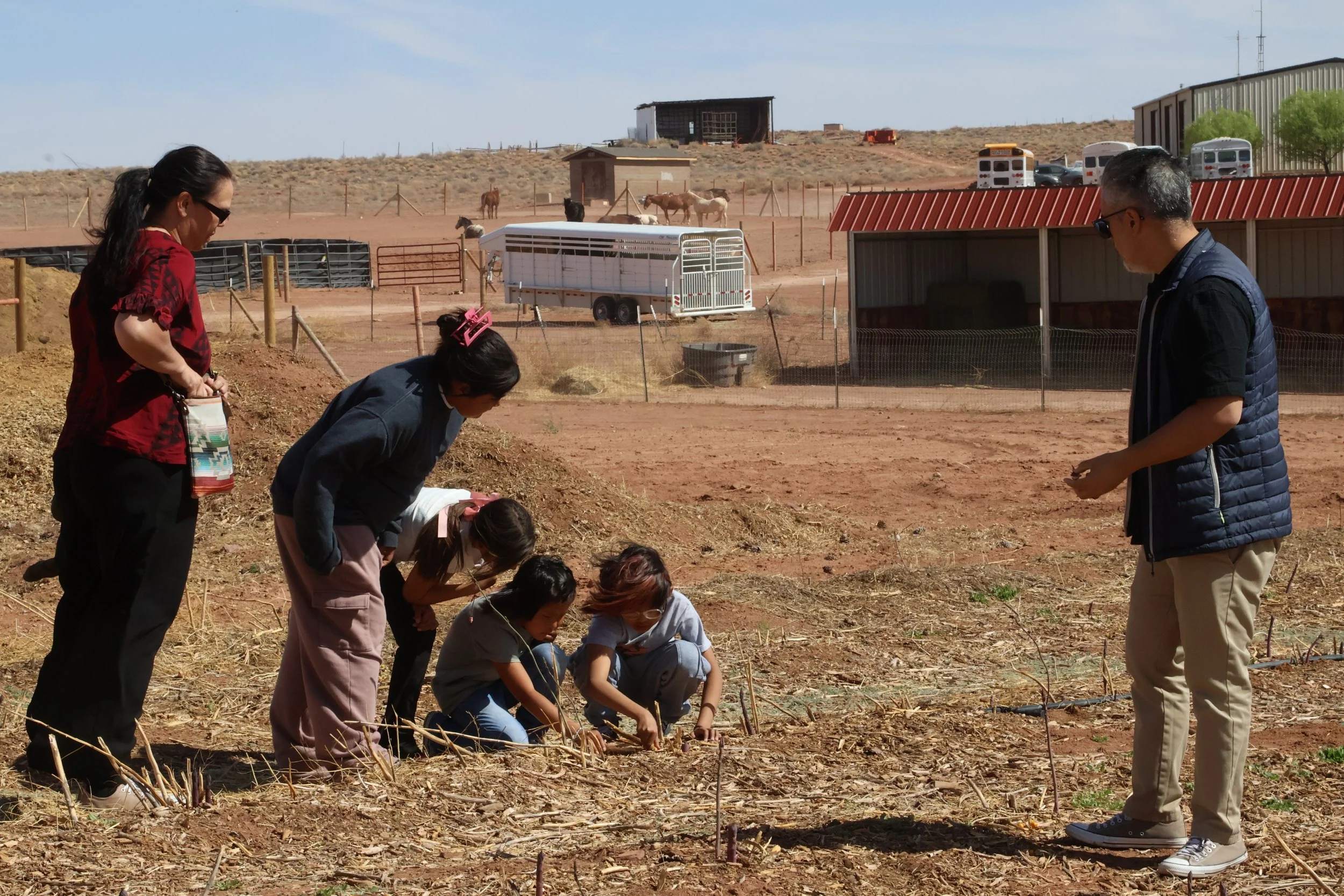New Zealand Visits Holbrook
During our last semester of the 24/25 school year, we had the pleasure of hosting Pastor Dwayne Strickland and his wife, Lanea Strickland, principal of the Rotorua Seventh-day Adventist school in New Zealand. In a Q&A with Lanea via email, we gained an in-depth perspective on what prompted them to visit Holbrook Indian School. These were her responses:
How did you learn about Holbrook Indian School (HIS)?
I learnt about Holbrook Indian School when I started to search for indigenous Adventist communities. I found the Mamawi Atosketan Native School in Canada, the Australian Aboriginal Mamarapha College and connected up through their media pages. What touched me most about HIS was that the moment I saw the tamariki (children) in the photos, I was struck by how deeply similar our school communities are—in their native appearance, activities and ministry.
What drew your interest to visit HIS?
Rotorua Seventh-day Adventist School is unique as we have the highest percentage of Māori students in any Adventist school. We endeavour to meet the needs of our students and community using a culturally responsive approach whilst upholding the Special Character of the school.
In 2024, to further Christian Indigenous education we presented at local churches, the New Zealand Adventist Principals' consultation, and at Avondale University in Australia. During this time, we found out that the North American Division of the Seventh-day Adventist Church had publicly denounced the Doctrine of Discovery—a powerful stand that resonated deeply with our own experiences of the intergenerational impact of colonisation on Māori students and what that means for us as Adventists today.
In conversation with my Board Chair, Mr Glenn Benfell, it was proposed that we utilise funding from the New Zealand Principals’ Professional Coaching and Wellbeing initiative to further deepen and broaden our understanding of international Indigenous education. There could be no better opportunity than to visit and learn directly from the inspiring work being done here at HIS.
Were there any specific encounters you particularly enjoyed while on HIS campus?
We thoroughly enjoyed our time, learning and connection at HIS. We were given a full tour of the campus, where we observed classes in action, experienced their holistic approach to student support, and met the dedicated, hard-working staff.
One standout feature was their garden-to-table programme. The students were hands-on in the garden, one of the products they grew was a unique purple asparagus that we had the chance to taste raw and it tasted like sweetpeas. They grow watermelon, kale, carrots and their produce goes straight into the kitchen so by lunch we were blessed with a healthy, vegetarian meal. They also have regular customers from Holbrook who will purchase the organic vegetables with the small profit going back into the upkeep of the gardens.
There were many encounters that we will treasure - riding an American quarter horse, kneeling on the floor authentic Korean dinner with Laura and learning about trauma-informed practice, teaching in Grace’s social studies class and observing Sam teaching the students about the hogan through a model for the county fair. Thank you to Allison for hosting us so well, I know we may not have named all the staff personally here but we remember each one in our hearts—we are so grateful for the hospitality, openness and love given to us at HIS.
We shared a quiet, meaningful Italian meal with Loren and Diana in the Holbrook township, listening to their powerful personal testimony. To then read the full version again in our latest Sabbath School lesson halfway around the world felt like such a blessing. We had the privilege of sitting with Loren and the counseling team, whose insights into their effective trauma-informed approach to supporting Native American students from reservations were humbling. As part of their holistic MAPS (Mental, Academic/Artistic, Physical and Spiritual) approach, they shared how it involves culturally grounded, trust-centered support that honours their identity, history, and healing journey.
What is something new that you learned while visiting HIS?
One morning, we awoke to find the entire campus blanketed in snow! The power had gone out overnight due to fallen lines, but later that day the staff quickly organised snow sledding and hot chocolates for the students. The outdoor play broke the ice with the students who felt more comfortable sharing their language with us, like how to say “Ya'at'eeh.” It was important to us that we learnt how to pronounce the Diné language correctly, as for us our native language is a taonga treasure.
What is something impactful that you took with you back to New Zealand from your visit here?
Meeting other Indigenous cultures who have endured the impact of colonisation yet remain steadfast in their Christian faith strengthens our Māori ministry as we have a shared experience in being united and having resilience. Our voices are not often heard in the church and to be in Arizona, kanohi ki te kanohi —face to face emphasised the importance of God’s work in both our schools.
As part of their Indigenous cultural education, students at Holbrook Indian School learn traditional pottery techniques, developing their art with patterns and meanings which have been passed down through generations. My husband and I were deeply moved by the similarities to our own Māori culture—particularly when we noticed the step design of the mesas, which mirrors poutama, the stairway to heaven in our tradition. We were honoured to leave a gift of a koauau (traditional flute), complete with playing instructions, and were touched when Loren and Diana shared at Sabbath lunch how similar it sounded to their own Diné instrument. These moments of cultural connection and spiritual kinship reminded us that though our nations are distant, our hearts and histories often walk the same path.
Visiting HIS has been the opportunity of a lifetime for a small school principal like me. As a state-integrated funded school, we are able to run reasonably within our budget. We were deeply impressed by the high level of philanthropy in the U.S., especially in comparison to New Zealand—by the generosity of donors who give so faithfully to support this ministry, and by the dedicated team tasked with encouraging, promoting, and serving this vital work for the Diné people.
How has this enhanced your approach to what you might implement at the Rotorua SDA school?
There are cultural similarities between Māori and Diné communities and this highlights the potential for meaningful Indigenous Adventist connections. Previously, our students had written via pen pals to each other and we would love to keep in close contact with each other as sister schools. My husband and I have also talked about a mission trip as we felt we could have stayed longer to share and connect more.
For Adventist schools, it is essential to have an honest, humble integration of culture, language, arts and spiritual learning embedded into our curriculum. Colonisation used religion to destroy culture but betrayed the gospel. While the Bible speaks of God's love for all nations, colonisation divided, conquered, and destroyed in the name of Christ — a tragic misuse of sacred authority. Revelation 7:9 shows us what God’s expectation of his house, his blueprint for heaven - that it is a culturally diverse, rich, unique place where every tribe, nation nation, tribe, people and language has a place to stand before the Lamb. This example must be reflected in our schools if we are to truly educate for eternity. Our experience at HIS confirmed that being Māori and being Christian are not in conflict, and we are excited to extend this understanding to our community.
Funny tale from the Strickland’s visit to HIS:
When Mr. and Mrs. Strickland arrived, they had a schedule of where they would be on campus. At one point, I took them for a tour of the farm and to capture photos of them with our students. Having a rich cultural background, myself, I realize that many countries have various idioms that don’t necessarily mean the same here in the U.S. However, given that they spoke English, it took a minute for me to understand their puzzled, uninterested looks when I offered to give them a tour of our new “wash house” at the farm. Our wash house on the farm is to wash the produce that our students pull from the garden when it’s ready. However, in New Zealand, the term “wash house” means laundry facility. No wonder they seemed uninterested! We all shared a good laugh when we realized the mixup.
******************************************************************************
(Editor’s Note: In an divine turn of events, our original speaker for the same weekend that the Strickland’s were here was Pastor Manny Cruz. Unfortunately, he was not able to make it, but Pastor Rojas happened to be in Phoenix for a baptism and was more than willing to come up to Holbrook Indian School to speak for the weekend. This was a divine appointment indeed, for the Strickland’s had met Pastor Rojas in New Zealand eight years prior. The following questions are in relation to this fact.)
Re: Meeting Pastor Rojas in New Zealand—In his recent visit to HIS, he mentioned that a white feather ceremony was performed for him when he visited New Zealand. Was your husband, by chance, involved in any part of the ceremony?
Yes, our church family, Maranatha, formally welcomed Pastor Rojas to Aotearoa New Zealand when he came for the NZPUC Ignite Youth Congress 2017 in Auckland.
Our youngest brother, Darrius, performed the wero—a traditional Māori challenge in which a teka, a symbolic gesture of peace often represented by a leaf or feather, was laid on the ground for Pastor Rojas to acknowledge and pick up. The wero showcases mana (prestige, authority) of the hosts and tests the tapu (sacredness or respect) of the guests. It reflects traditional Māori values of respect, courage, peace, and protocol.
A taiaha (hand weapon) was gifted by the our late father, Pastor Tata Strickland, to Pastor Rojas at the end of the conference. The carved end of a taiaha often features a face with a tongue (called arero), symbolising speech, challenge, and the power of words. When Pastor Rojas raised the taiaha above his head and preached his final sermon, our hearts were overcome with emotions as we saw our culture being honoured within the church with such strength.
Did you end up staying longer to hear Pastor Rojas speak while he was here at HIS? If so, what was it like seeing him again and, fortuitously, here at HIS while you were both here?
When we heard that Pastor Rojas was speaking for Sabbath evening we knew instantly that it was God’s perfect timing. He was affectionately close to our father and pastor, Tata Strickland, who passed away in December last year. [Pastor Rojas’] booming voice, love for the young people and unwavering faith in God despite his recent heart operation brought tears to our eyes as we remembered our father who was so similar.
It was emotional to hear him speak and share, without him knowing we were there, of his warrior welcome experience in New Zealand. We have had many discussions about his words that night - “A native in Christ is able to see the good medicine in his culture.”
What impressed you the most about hearing Pastor Rojas speak—be it in New Zealand or here at HIS?
Pastor Rojas represents to us a voice, a seat at the table for Indigenous Adventists. He is someone who unapologetically loves God and his cultural heritage. He speaks the talk and walks the walk. He has been part of our own story—when he raised the taiaha above his head, we had never seen a pastor do that before and it broke down a barrier for us. When our language, culture and ways of being are not seen in the church, we wonder—where is our place here? Is my culture not acceptable to God? It resonated with us, as many times we have to leave our korowai feathered cloak represented as culture and language, at the church door.
My husband, Pastor Dwayne Strickland, has taken over the “family business” and is now Pastor in Maranatha Rotorua and Whakatāne church, and school chaplain to the Whakatāne Seventh-day Adventist School. We continue to listen to Pastor Rojas on podcast and I have joined the Diné radio station online.
*******
It’s always a pleasure to host guests, but guests from another country—especially one with a rich understanding of cultural practices and heritage, are very special. We are grateful that our brother and sister from New Zealand took the time to reach out to us and make time to visit us to see how our two school can collaborate. We look forward to any doors and opportunities that God opens up to maintain our connections with our New Zealand family in Christ.





